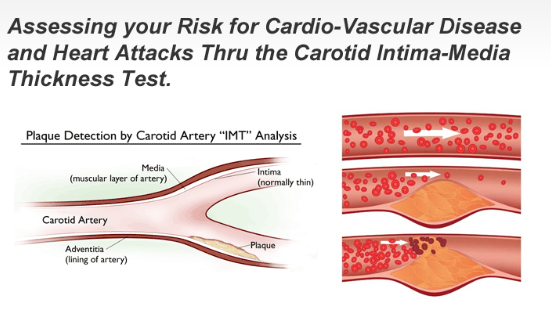Death By Inflammation
True or false?
- Over 50% of all heart attack and stroke patients have “normal” cholesterol.
- One in 30 female deaths are from breast cancer, while one in 2.6 are from cardiovascular disease.
- Nearly 2,500 Americans die of cardiovascular disease each day, one death every 37 seconds, more than the deaths caused by all forms of cancer.
Unfortunately, all three are true. But why? Is it our bad luck, genetics, too many BBQ ribs? Yes and no.
You see, over your lifetime, genetic, environmental, and other factors may cause inflammation within the inner walls of your arteries. A sticky substance called plaque builds up inside the walls of your arteries as a result of this inflammation. Subsequently, when that plaque ruptures it forms a blood clot (thrombus) which in turn prevents blood from passing through the vessel(s), and forces you to dial 911.
So, how do I even know if I have this heartless plaque lurking inside my arteries?
I’m glad you asked!
For years, physicians have been doing routine blood tests assessing total cholesterol, HDL, LDL, triglycerides, and blood sugar. For the most part, doctors are still fixated on cholesterol numbers and the simplistic concept of LDL as the “bad” cholesterol and HDL as the “good” one. Which is supremely infuriating since we already have the right tools to detect and treat the early signs of potentially lethal cardiovascular situations before they become serious.
Let’s look at one of these amazing diagnostic tools available to you and your doctor to make an accurate prediction of an impending heart attack or stroke.
Intima-Media Thickness (IMT) – non-invasive screening method that measures carotid artery intima-media thickness. The device has a powerful ability to identify soft, non-calcified plaque. Soft, flexible plaque has a greater tendency to rapture than the solid, calcified (hard) plaque. IMT has become a cutting-edge noninvasive procedure just as echocardiography was twenty-five years ago. The American Heart Association has endorsed this procedure as an effective method of assessing blockages that haven’t yet created clinical signs and symptoms. The association has stated that for people without symptoms who are over the age of 45, IMT adds a substantial level of improvement to traditional risk factor assessment. Also note, the rate of change of the carotid IMT is of greater significance than the one single IMT result at a single point in time.
Who should have the test?
Consider IMT if you have a strong family history of heart disease or stroke, have multiple cardiovascular risk factors (Framingham Risk Score) or/and extra-vigilant about early cardiovascular disease.
I’m thrilled to announce that I’ll be IMT certified sonographer soon. Join the movement, learn this invaluable method and become a part of CardioRisk Laboratories family. For more information on CIMT training go to https://www.cardiorisk.us/cimt/

